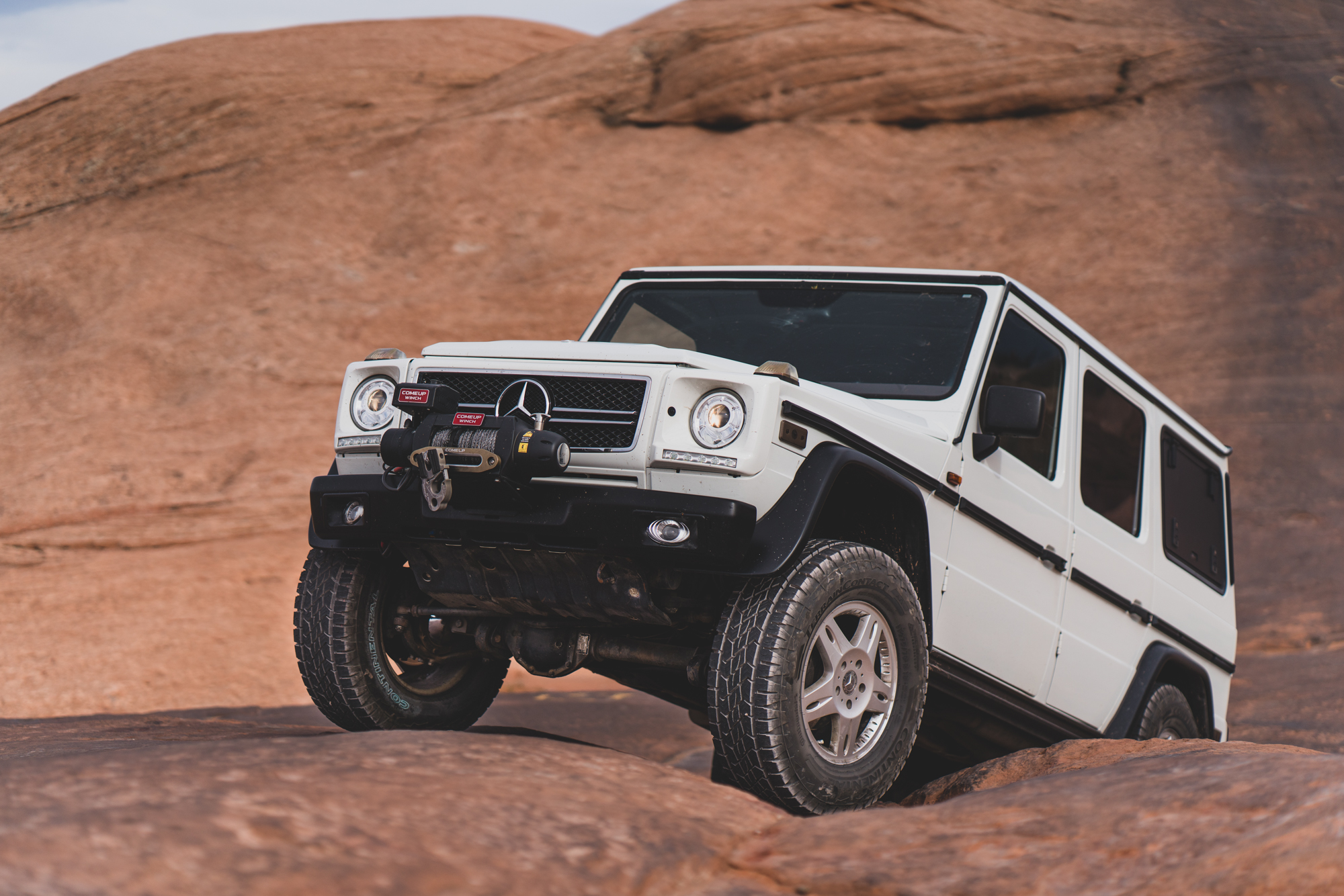Editor’s Note: This article was originally published in Overland Journal, Fall 2017.
The reality of a pinnacle overland vehicle is that it requires almost no modification for global adventure travel. Models like the Land Cruiser, G-Class, and Defender are essentially ready to go from the factory; even in stock trim, most iterations will handle any conceivable “road” condition. So, why do we modify our vehicles at all? Some of it is certainly vanity (if we are honest with ourselves) and the rest is an attempt to customize away a compromise or influence some degree of convenience or comfort. There are also those truly necessary modifications that are demanded because of terrain or payload requirements. In the case of my much-loved Geländewagen, there were a few “necessary” modifications, several nods to style, and a few experiments. Most have exceeded my expectations—some have not.
TRAIL MODIFICATIONS
Some projects seem to continually evolve, or maybe the owner just can’t leave well enough alone, while others settle into a series of modifications that just work for the life of the vehicle. Regarding the previous suspension of the G-Class, I was never satisfied with the spring rate, height, and damping of the Bilstein/Eibach combination; the overall ride quality was too stiff and unsettled, particularly on corrugated roads. The front also sat much higher than the rear, requiring a set of spacers to level the vehicle. This made the lift too tall, which conflicted with my goals for daily-driver duties and speed limit-handling expectations. As a result, I installed a set of Thor Motorworks custom springs, a product specifically designed to take overland loads and allow a 50-millimeter increase in ride height. After fitment, I immediately noted the improved ride quality and overall compliance of the coils. At the same time, I mounted Fox remote reservoir 2-inch shocks with external damping adjustments. These units are a work of art and greatly improved the fluid volume (to reduce heat and fade) and damping dynamics. Small inputs were more attenuated and larger impacts far more settled, with reduced yaw, pitch, and roll.
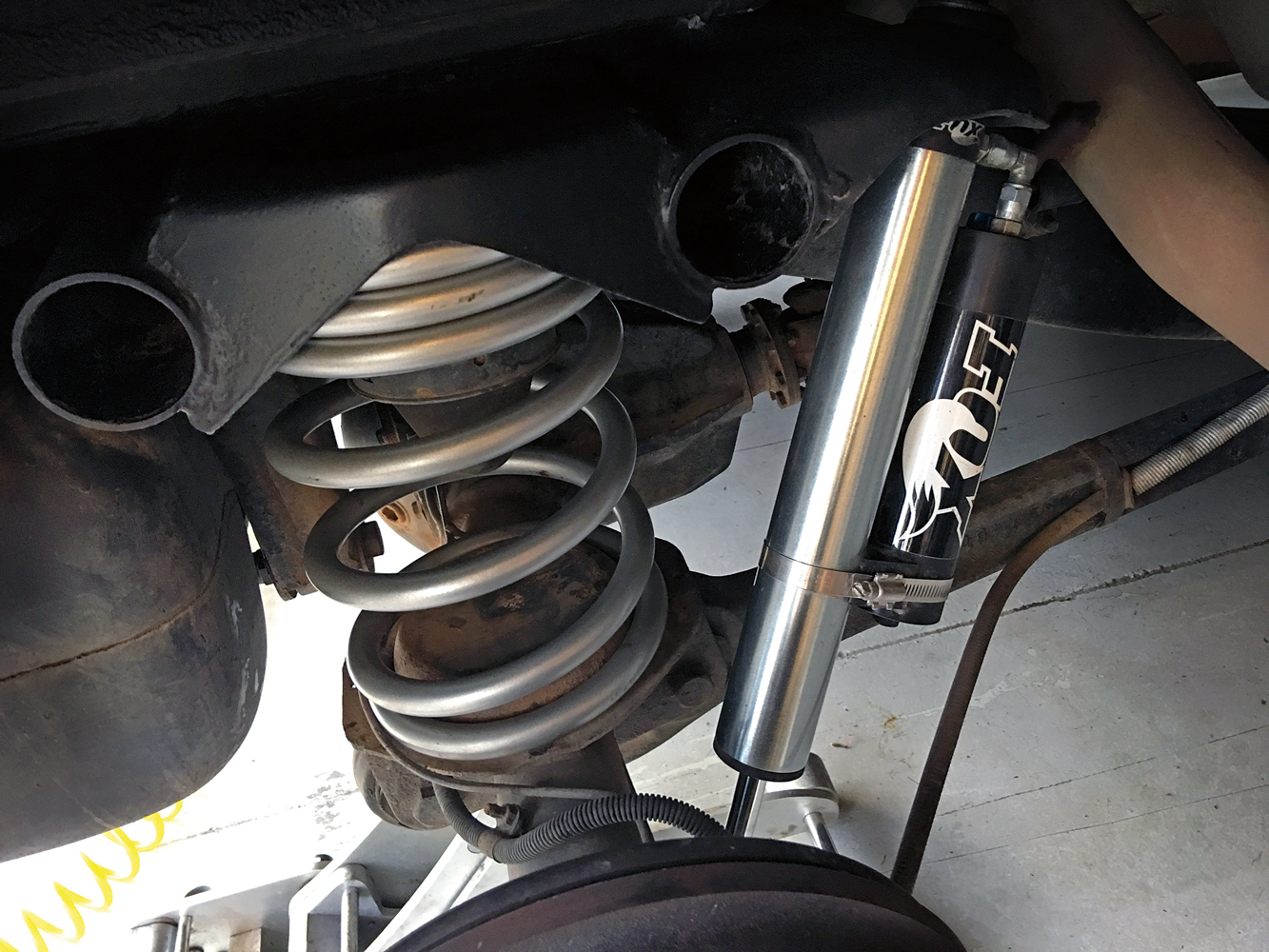
Additional changes focused on a few hard lessons. The most difficult challenge was with the Hutchinson wheels, which despite being of exceptional quality, never balanced properly. After visiting several 4WD and tire shops, I simply gave in and removed them. I will likely research a shop with a good reputation for one more chance, but for now, those heavy-duty (and heavy) beadlocks will sit in the shop. I reinstalled the factory wheels and mounted a set of 285/75R18 Cooper A/T3s. I have used these tires on a few vehicles and have appreciated the overall effectiveness of the compound and tread pattern. They are quieter than traditional all-terrains, yet offer excellent performance in desert conditions and on wet, icy, or snowy roads (the A/T3 won our Editor’s Choice Award, Summer 2014 issue). Most recently, I have installed a set of Continental TerrainContact ATs in 275/70 R18 on the factory wheels.


The last few trail changes centered around updating some older products to newer solutions for both the opportunity to evaluate them, and to take advantage of performance improvements. This started with upgrading the winch to the ComeUp fully sealed Gen2 9.5rs, a tool that includes synthetic line and both wired and wireless remotes. This unit not only boasts a quick line speed but also benefits from durable finish coatings and fully submersible construction. I also added a Factor 55 Ultra- Hook shackle. For lighting, I wanted to test some of the newer round LED lights. The 180SD driving pattern units I selected came from Lightforce, a brand I have used successfully around the world. This model is made from cast aluminum with massive heat sinks and features IP69K waterproofing. Overall, I have been extremely pleased with the off-highway modifications I have made to the G-Wagen—the vehicle has easily crossed any obstacle I have encountered on technical trails.

OVERLAND MODIFICATIONS
While the trail enhancements are always fun to test on challenging terrain, I use this vehicle primarily for travel, often including remote camping. To better accommodate my equipment, I installed the Front Runner drawer system, a clean and modern-looking solution that features strong slides and a carpeted platform. There have been no rattles and the kit was easy to install. With the improved storage, I also decided to permanently mount a National Luna 60L dual-zone fridge, one of the stalwarts of the industry and an impressive performer. I particularly like the large freezer section that can keep the ice (and the Hendrick’s Gin) at just the right temperature. One of the more innovative products I tested was Front Runner’s rear seat replacement panels, carpeted modules that take the place of the rear seats and allow for an entirely flat load floor. While I do not run these for most daily driving duties, on longer trips I appreciate the reduced weight (the seats are well over 100 pounds) and additional space. For electronics modifications, I added a new stereo with XM and Bluetooth, along with a cadre of 12-volt and USB outlets.

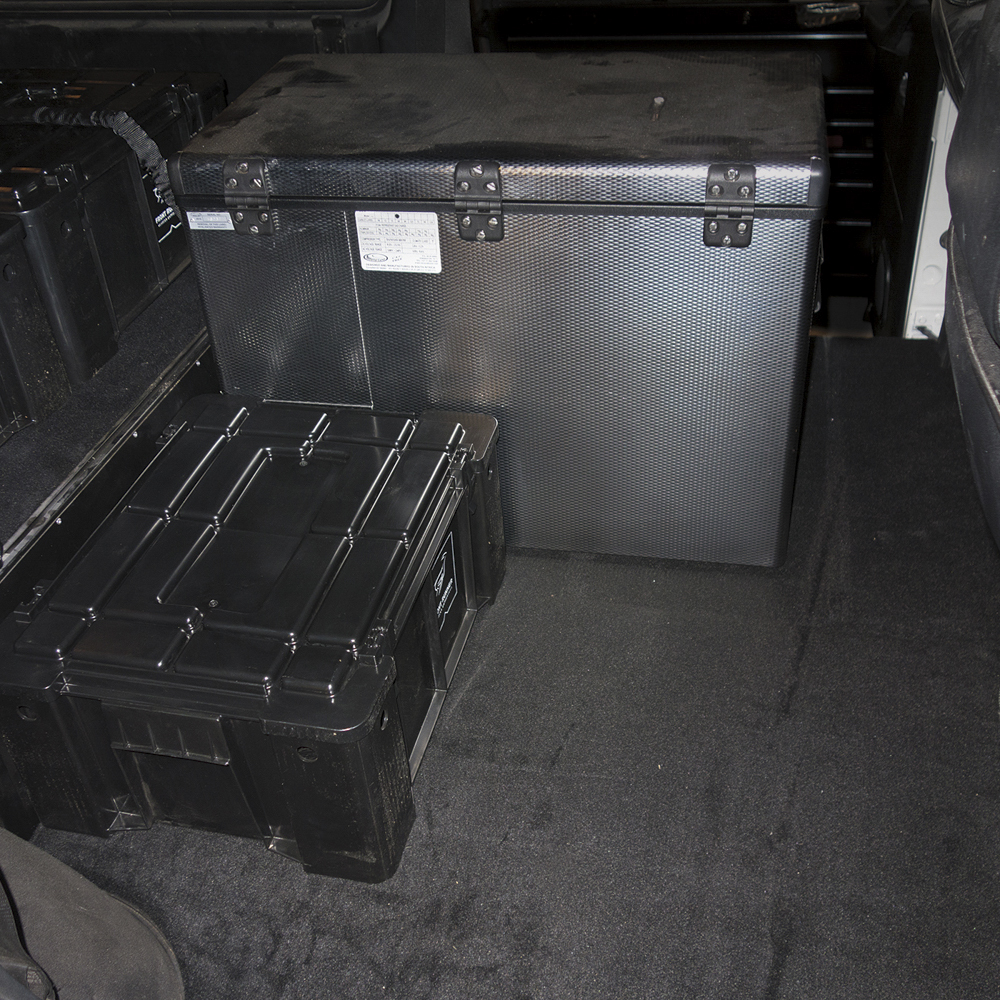
I wanted to have multiple options for the roof, starting with no rack for running around my home base of Prescott, Arizona, to the full-length Front Runner Slimline II aluminum platform. I prefer the later configuration because the unit is made from lightweight materials and has a lower profile than most racks due to the lack of a basket. I have never found the need for upper rails with proper lashing methods. My final arrangement utilizes three Rhino-Rack cross rails for mounting accessories like kayak cradles or bike carriers. I use these regularly and also rely on the bars to mount the Eezi- Awn Stealth hard shell roof top tent. I typically avoid RTTs on my vehicles for daily driving duties but recognize the benefit of hard shell units because of the rapid setup and ease of keeping all of the bedding in place (including pillows). The downside of any roof load is the effect on handling and fuel economy, so that should be considered based on the vehicle type and driving style. The quality of the Stealth is notable, particularly the fabric materials and mattress, the latter being better than what I have found in most hotels.
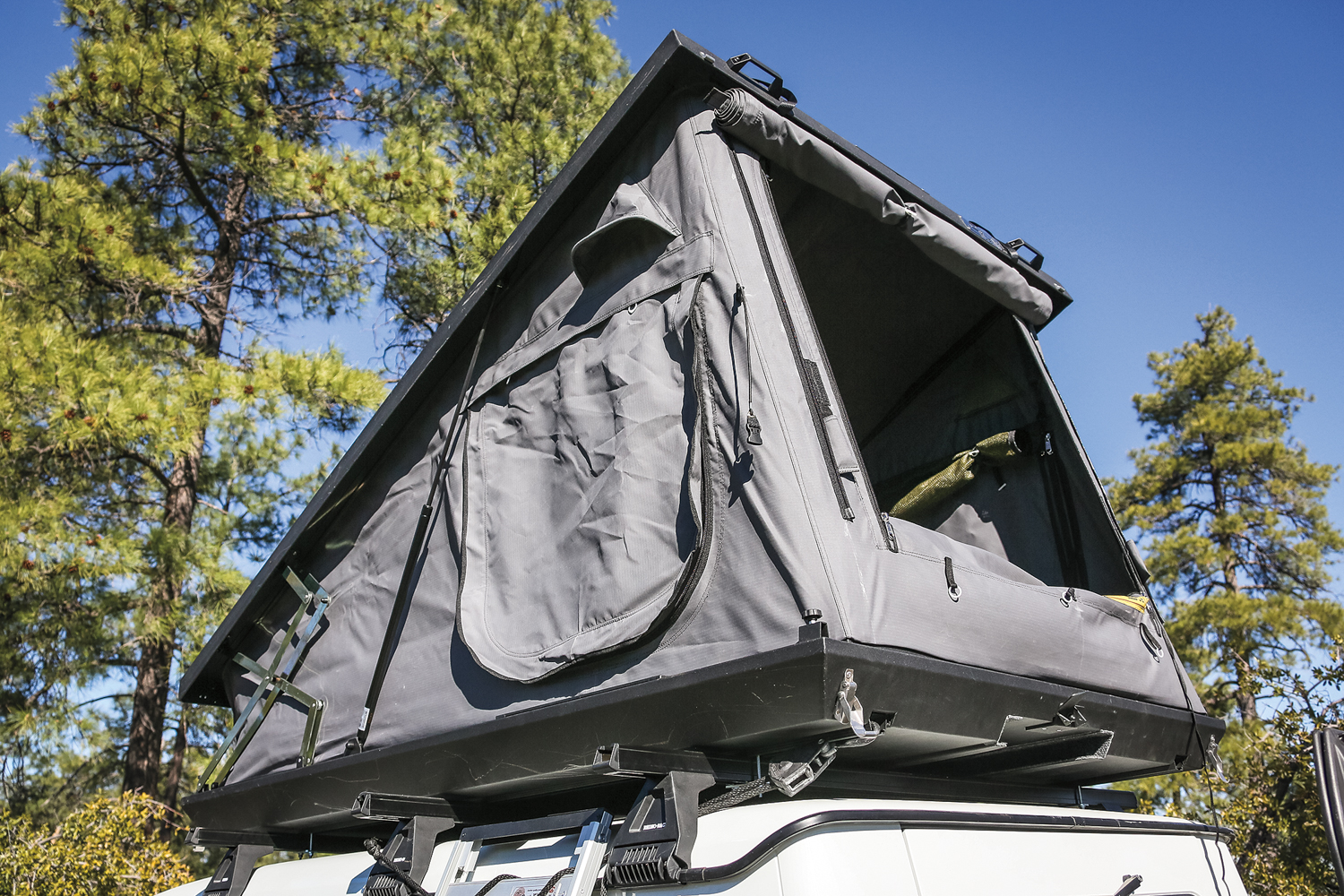
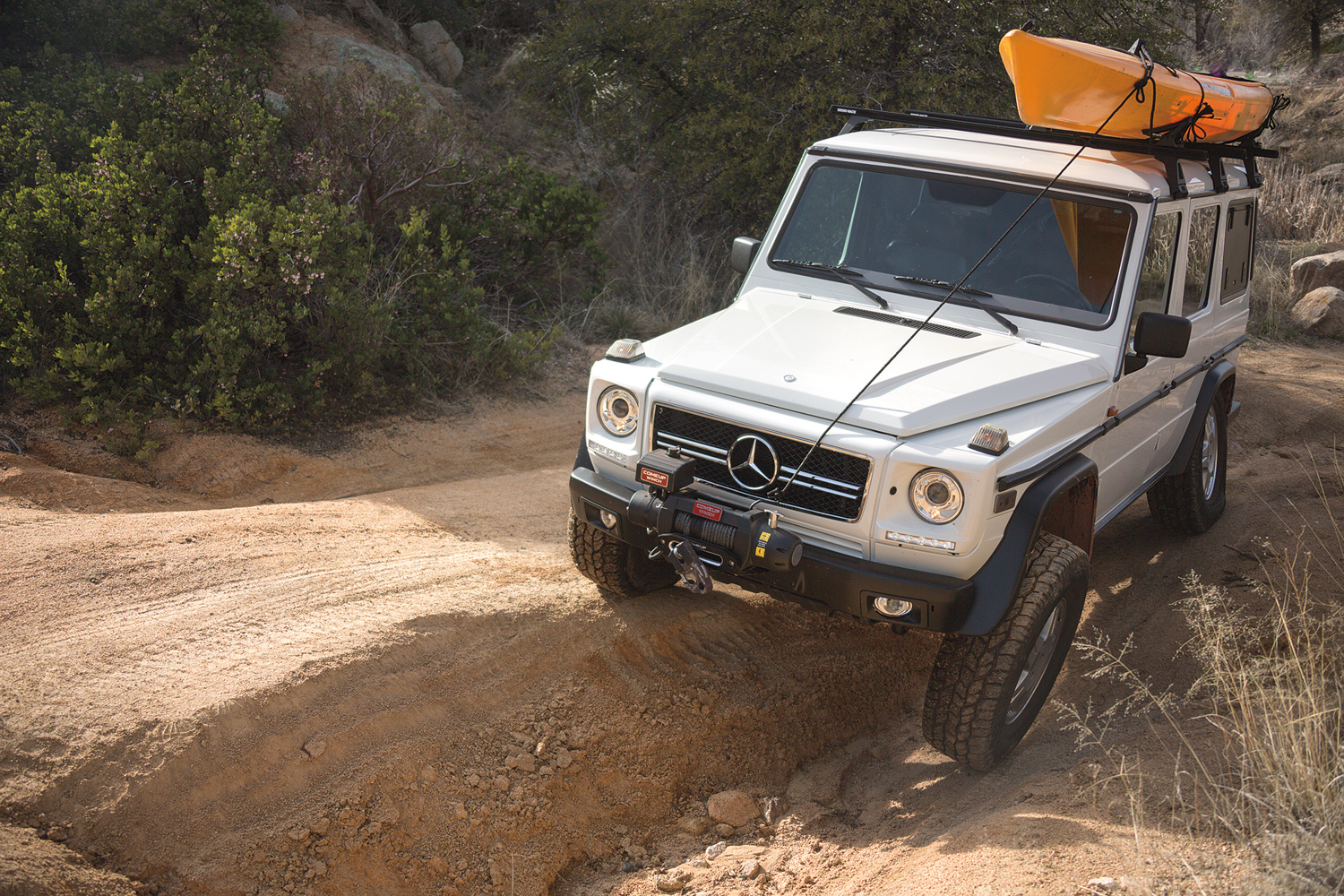
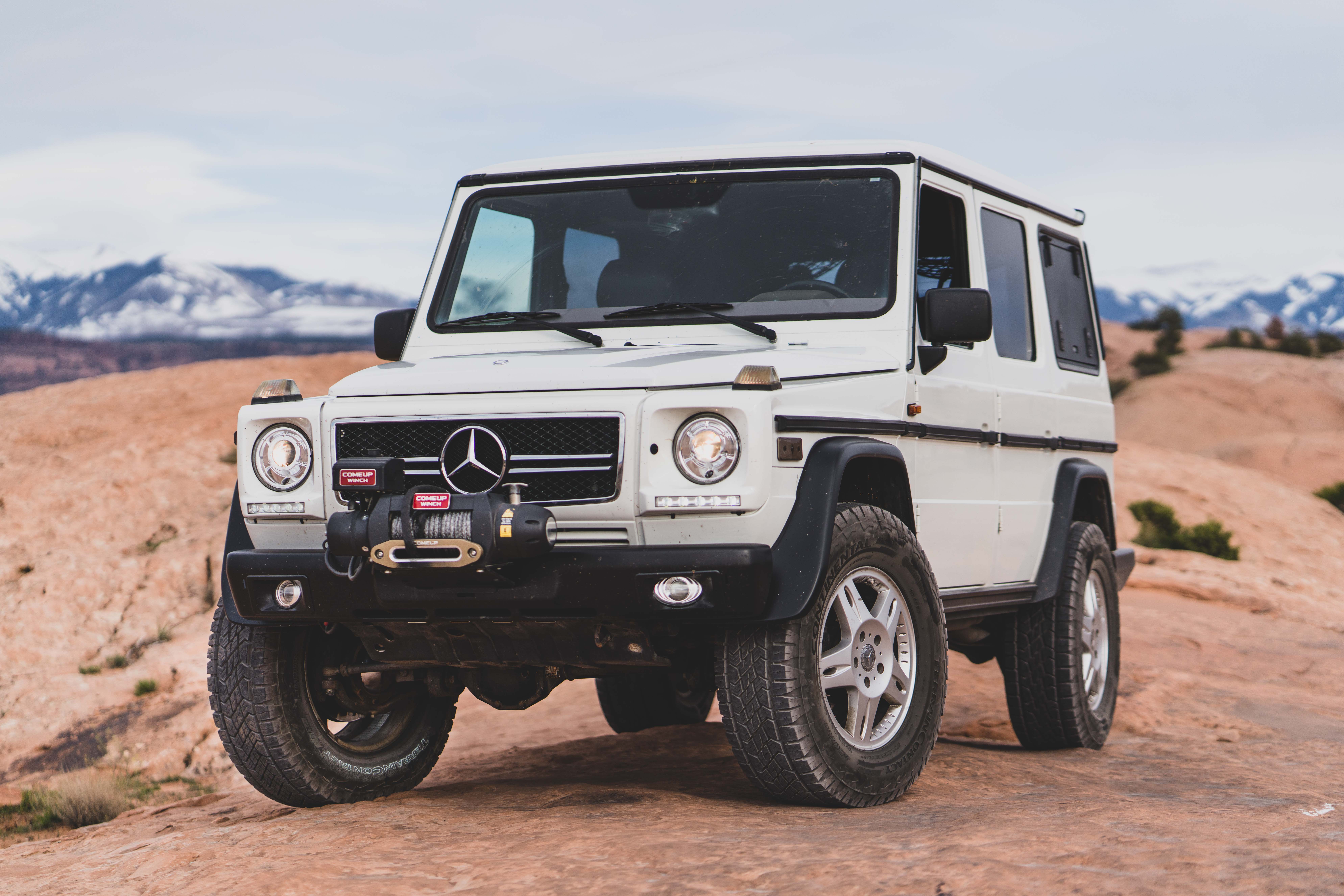
In its final form, the G-Wagen spends most of its days and travel time in the most simple and minimalist configuration possible. We also changed the tires for a new model to test from Continental, the TerrainContact A/T in 275/70 R18, which is just over a 33 inch diameter actual height. Traveling primarily in the desert southwest and Baja, a more aggressive tire is simply not needed, particularly with factory locking differentials and a 12 volt winch.
CONCLUSIONS
With trail and camp enhancements finished, I turned my attention to the last few cosmetic and maintenance items. The G-Wagen was originally a dark blue and had some minor rust at the B-pillar. I decided to have the entire vehicle repainted and all of the small dents and dings repaired. This took a few months (there was no hurry as I was riding a motorcycle in South America), but the effort and expense was worth it, resulting in a factory quality respray to Mercedes white, including all door jams and wheel wells. At the same time, I made the questionable decision to update the front clip to the more modern panels, projection lamps, and LEDs. I could certainly attempt the argument of improved lighting, but it was mostly that I liked the newer design—hopefully, the purists will forgive. With the project finished, I have just enjoyed driving it, both on road and off, including some extended camping trips, including an adventure all the way to the southern tip of Baja and a solo foray to Mission Santa Maria (Mission Impossible). Now the question will be—can I leave well enough alone?
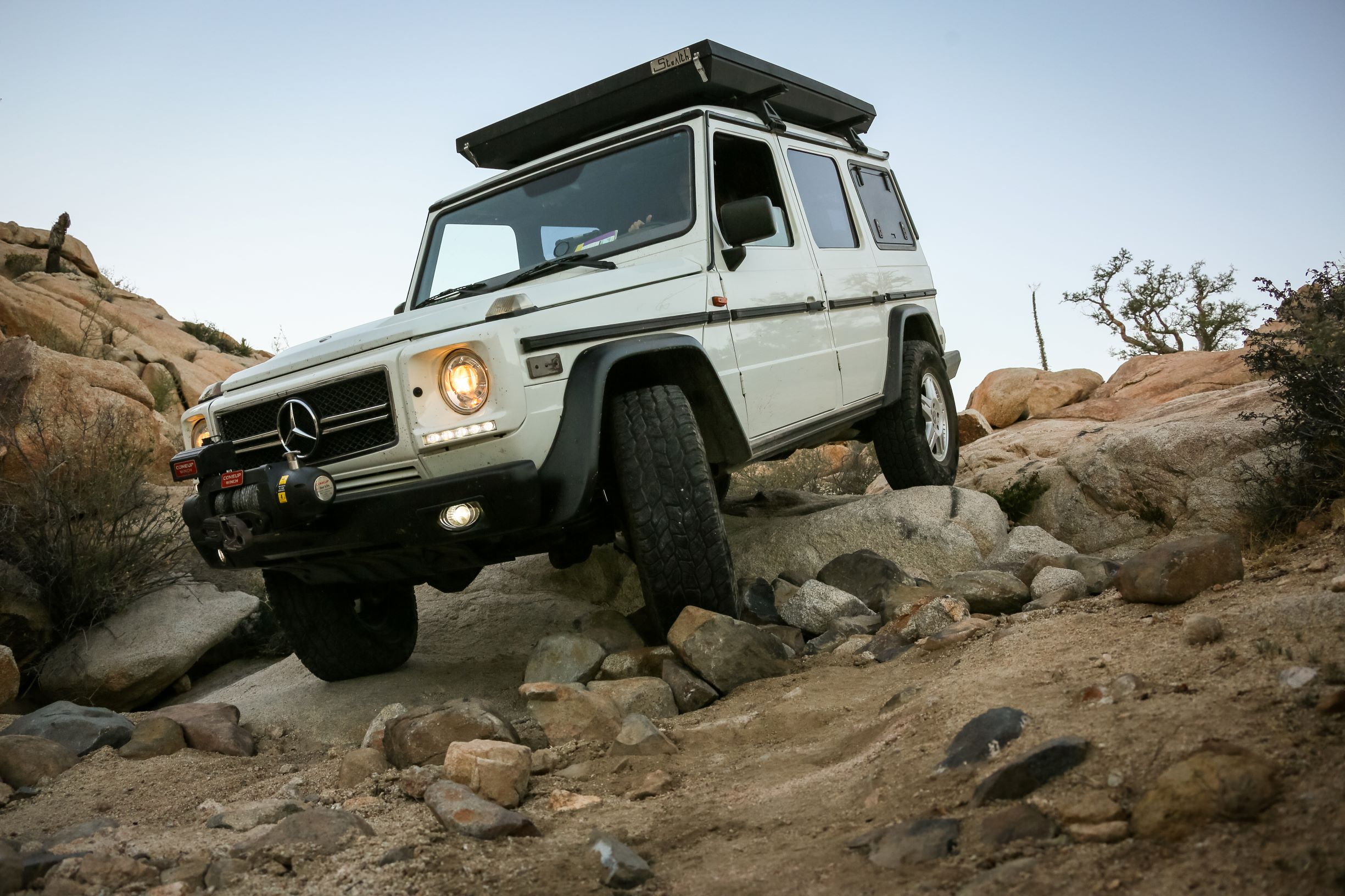
We had an exceptional adventure down Baja for several weeks, no convoy, no support vehicles, just the G-Wagen and some of the most remote and challenging tracks on the peninsula. Mission Santa Maria was particularly difficult, and required all three lockers at times. The roof tent added weight, but we camped nearly every night, so the convenience and comfort was worth it.

On my recent trip to Moab, the G-Wagen remained in its minimalist configuration, and did everything I asked of it, including hours on the highway and days on the technical slickrock trails.

Sedona, Arizona
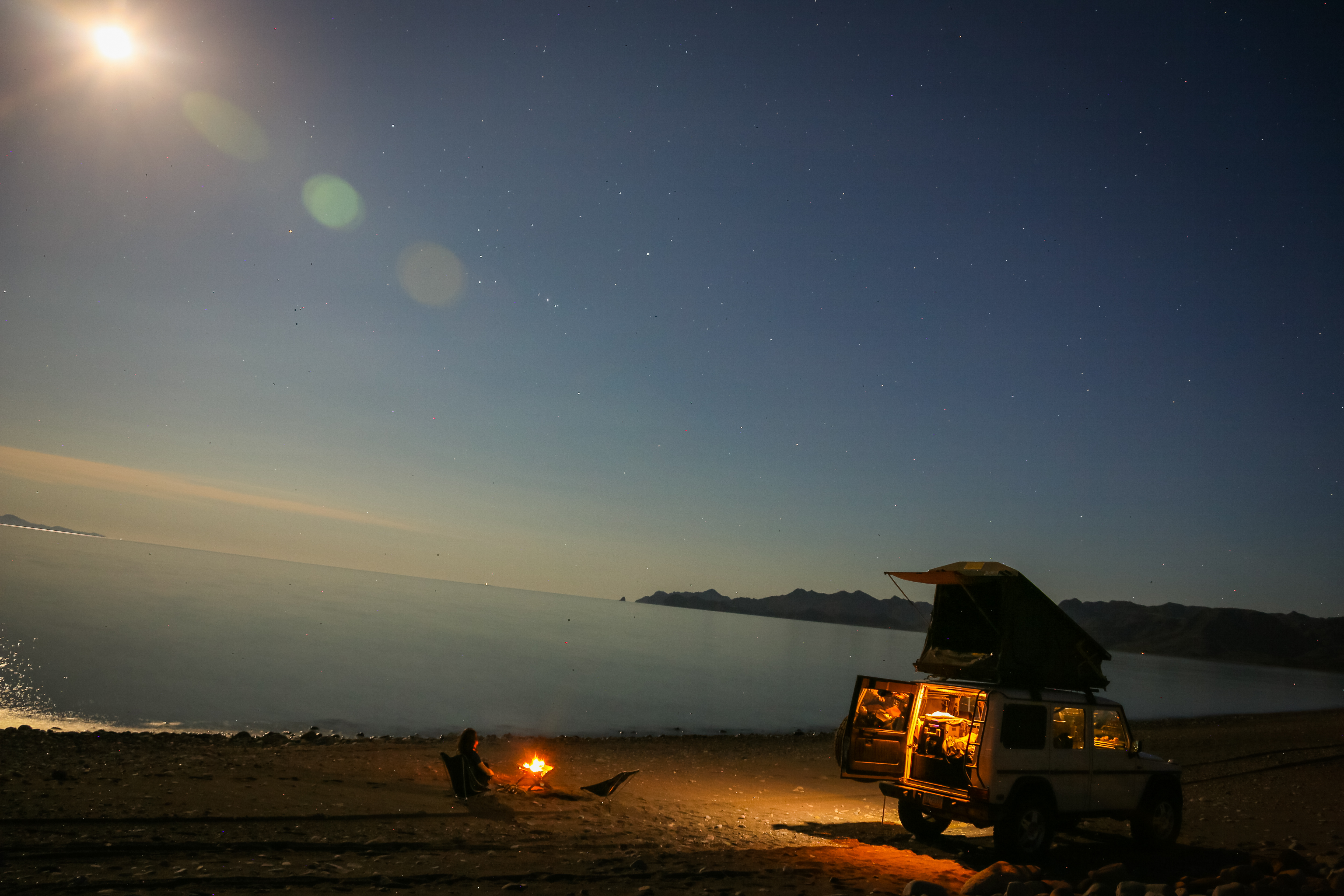 Camping on the beach in Baja, under the full moon.
Camping on the beach in Baja, under the full moon. 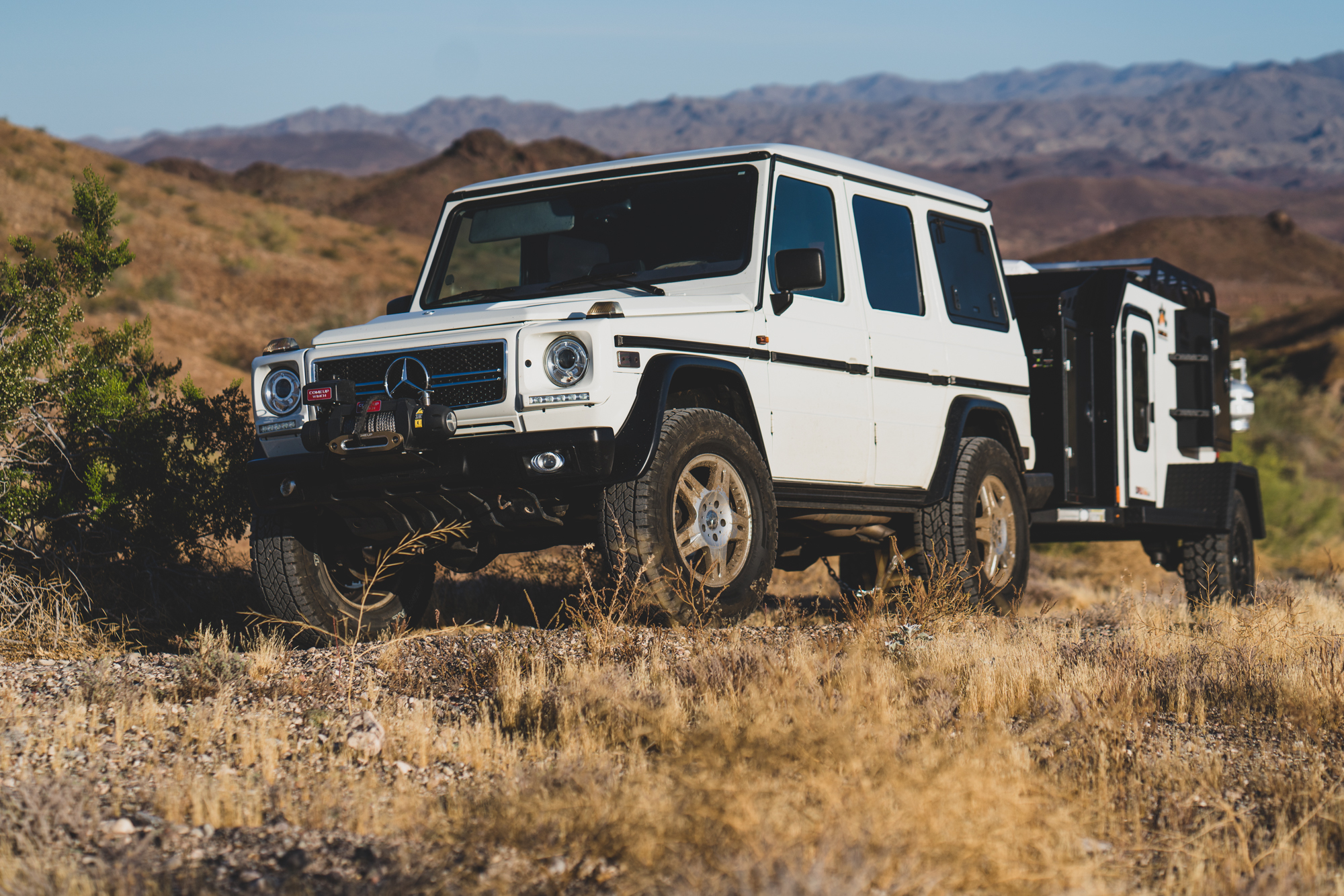
We even tested a few trailers along the way, including this Off-Grid unit.

It is always fun to partner with other companies on content projects, including a recent adventure with Triple Aught Designs, and some of the incredible aircraft at Tac Aero


